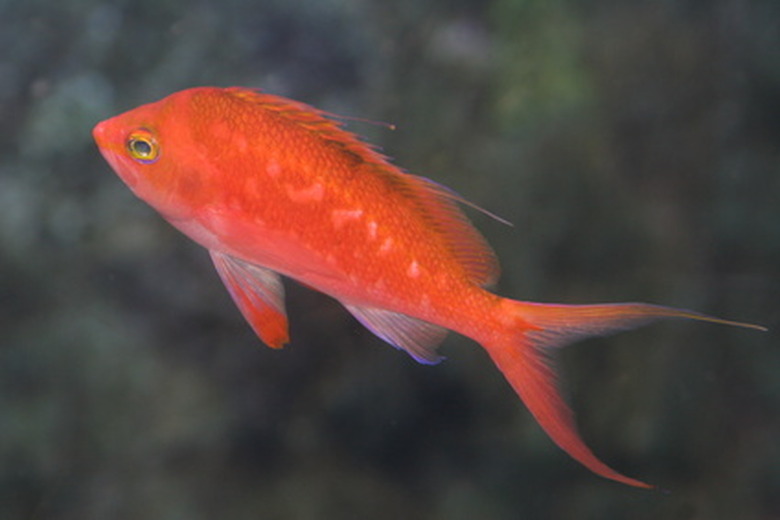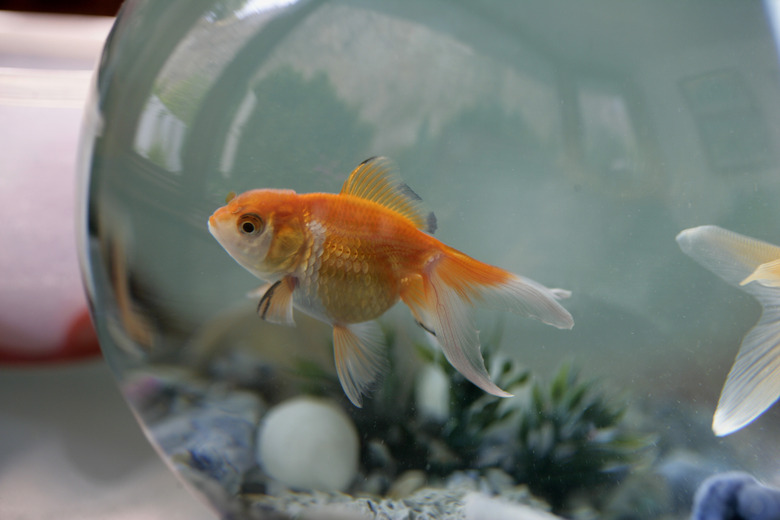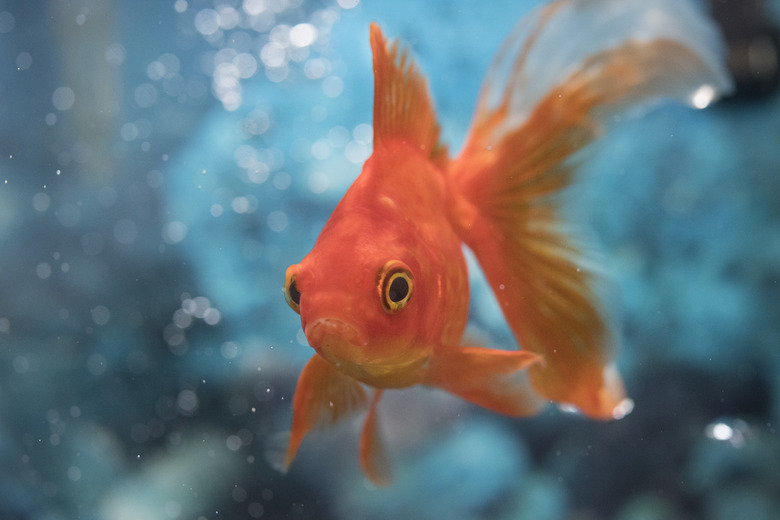Difference Between Male & Female Goldfish
Knowing the sex of goldfish is not only important for breeding purposes but also in the naming of your fish. The difference between male and female goldfish is harder to distinguish when they are young; however, as they mature, you will be able to notice certain differences that are more characteristic of one or the other. For instance, adult male goldfish are usually narrower than females. Until you are certain of the sex, it might be best to choose a generic name.
Female and male goldfish body shape
Female and male goldfish body shape
Without a complex DNA analysis, you'll need to wait until goldfish are at least a year old before being able to see signs of gender. At maturity, goldfish are usually three to five inches long. Only then you might see subtle body differences, but you'll have to look carefully. For instance, males are sometimes brighter in color than females, but not always.
When looking down on top of the body of a goldfish, the mature female's body is generally more plump and more round compared to that of the male goldfish. The male goldfish is usually longer and thinner in comparison to the female. The sides of a female's body might also appear to be uneven; one side will stick out more than the other.
Tubercles on male goldfish
Tubercles on male goldfish
Tubercles are little white spots or bumps that develop on mature male goldfish during spawning. The male will develop these little bumps on their heads and on their gill covers, called operculum. These spots will also be noticeable on the leading edge or ray of the male's pectoral fins during breeding. Note that tubercles on gills and fins are only visible during breeding season.
Female and male goldfish fins
Female and male goldfish fins
On male goldfish, the first ray of the pectoral fin is thicker and stiffer in comparison to the female's fin. The pectoral fin is located just under and behind the gills. The female's fin is rounded, and the male's is longer and more pointed. On the female, the leading edge of the anal fin, located behind the vent, will be thicker.
Female and male goldfish vents
Female and male goldfish vents
The vent is the anal opening of the goldfish. When the female is ready to breed the shape of the vent will change. This area will become larger, round, and stick out; it will be convex in appearance. Note the vent on female goldfish is easier to see from the side.
The male's vent is smaller, thinner, triangulated, and concave or indented in appearance. It's possible to net the fish and hold it upside down to see the vent better, but clearly this is risky and challenging to do if you haven't done it before.
Goldfish mating behavior
Goldfish mating behavior
Sometimes the easiest way to determine if goldfish are male or female is to observe them during mating season, which is usually late spring to mid-summer. Temperature is also important because the tank must gradually rise to at least 68F for several days. Once the environment is perfect, goldfish behavior will change, assuming you have both a male and a female.
When you observe the fish during spawning, you will see that the male goldfish is the more aggressive of the two. He is the one doing the chasing. He will bump the female, tapping on her side, to try and get her to release her eggs. The female is the one being harassed and the one being chased. It might look like fighting.
Eventually, the female will release eggs, usually in a heavily planted area. The male will then swim over them several times to fertilize the eggs.


